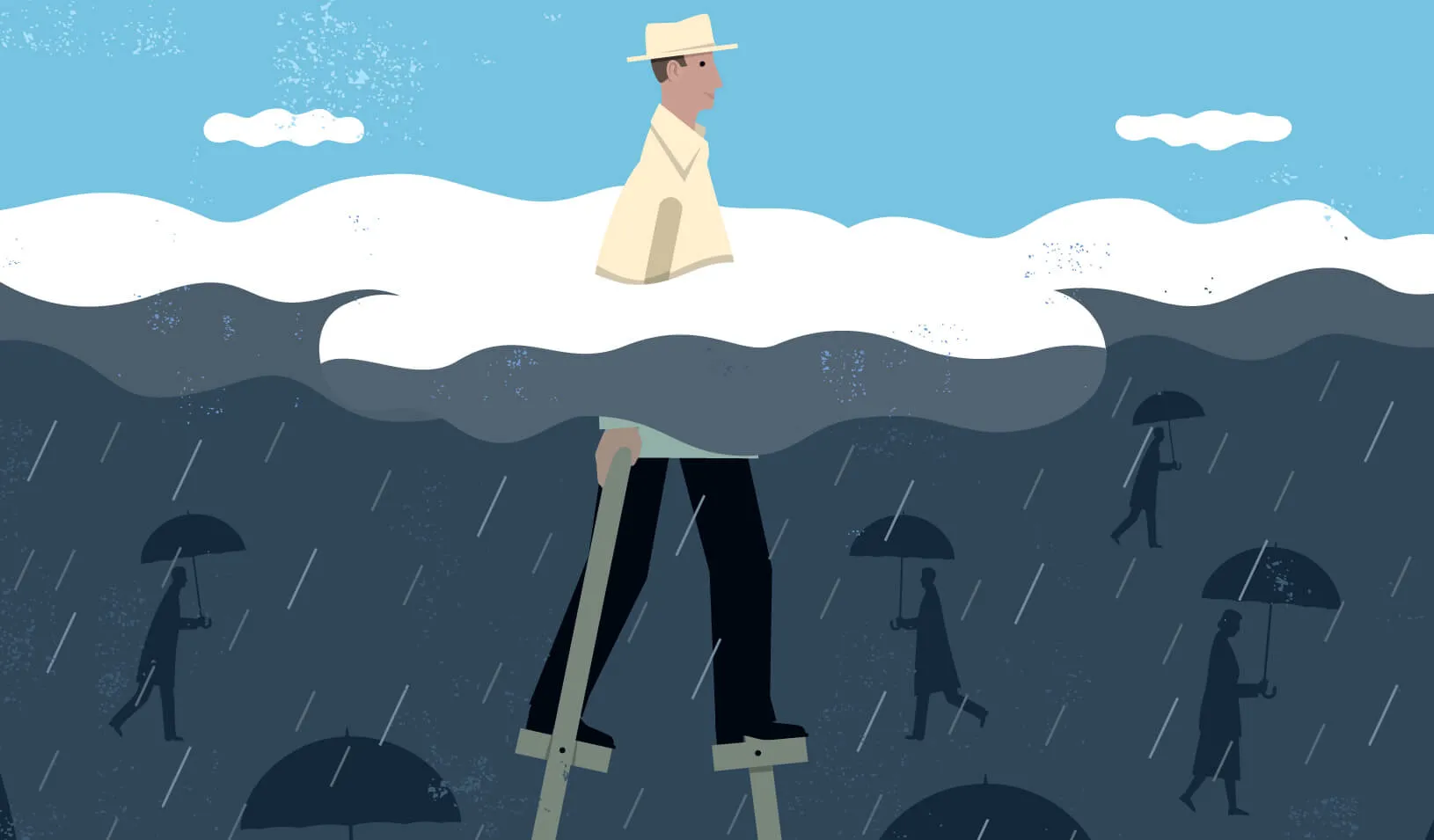The Value of Hope
Stanford research shows that lacking hope may cost you — and others around you.
April 17, 2017

Hope is more valuable than fear in relationships, research shows. | iStock/dane_mark
If you’ve ever terminated a relationship — a romance, a friendship, a business partnership — to avoid being dumped or hung out to dry, you’re not alone. Many relationships unravel precisely because individuals worry about being left behind and preemptively decide to call it quits. As it turns out, our desire for security can prompt us to preemptively strike against an uncertain threat, even if in doing so we also hurt ourselves.
Organizational behavior professor Nir Halevy of Stanford Graduate School of Business explored this puzzling social behavior in a new paper published in the Journal of Personality and Social Psychology. His findings challenge the common assumption that fear is the primary instigator of defensive aggression. Instead, he found these preemptive strikes had more to do with the lack of hope.
“Preemptive strikes often occur in situations in which both parties would rather not pull the trigger,” Halevy says. To illustrate, Halevy shares an example laid out by Nobel laureate Thomas Schelling in his influential book The Strategy of Conflict. A homeowner, alarmed by a noise at night, goes downstairs with a gun in his hand and finds himself face-to-face with an armed burglar. “Both the homeowner and the burglar would rather walk away from the situation without having to use their firearms,” Halevy says. “However, coordinating that outcome is difficult given the first-mover advantage in this situation.”
While previous research has focused on the role of fear in motivating preemptive strikes, Halevy wondered if there was more to the story. Reasoning that situations amenable to preemptive strikes are likely to be characterized by a mixture of different positive and negative emotions, he designed a series of experiments to explore how a broader range of emotions, including fear, anger, disgust, happiness, and hope, influence defensive aggression. The studies employed a simple game in which two players independently decide whether or not to press a big red “attack” button over a span of 60 seconds. If neither player attacked, they each got $3. If one or both attacked, the player who did so first received $2.50 while the person who attacked second or not at all got a mere $0.50.
“I wanted to understand how people think, feel, and behave in this simplified model of an important strategic situation,” Halevy says. “No one should press the red button, but many people do. The question is, why would people do something that’s suboptimal from everyone’s perspective?”
To answer that question, Halevy manipulated the presence or absence of various emotions in players across a number of different permutations of the game. His findings confirmed his suspicion that fear alone was too narrow of an explanation for why people engage in preemptive strikes. “The studies show that the lack of hope is actually a more robust, more persistent predictor of defensive aggression,” he says. Measuring the attack rates for participants induced to feel different emotions, Halevy found that those who felt hopeful pressed the attack button only 31% of the time, compared with 50% for the control group, 51% for those experiencing happiness, and 49% for those experiencing fear.
Differentiating between fear and lack of hope might seem like semantic quibbling, but emotion researchers have shown these distinctions to be meaningful and consequential, Halevy says. For example, appraisal theories of emotion distinguish different feeling states not only based on their valence (i.e., positive or negative), but also based on whether they are associated with high versus low control, certainty versus uncertainty, and so on. While happiness is a positive emotion and anger is a negative emotion, both are associated with certainty. Hope and fear, on the other hand, emerge in situations characterized by high uncertainty.
What’s particularly intriguing about hope, Halevy says, is that “it’s a future-oriented, positive emotion that often emerges in challenging and difficult circumstances.” People don’t feel hope when things are great; it’s when they experience a lot of uncertainty and anxiety that hope emerges. His finding — that the absence of a positive emotion could be more important than the presence of a negative emotion in motivating defensive aggression — is significant because in many situations increasing hope isn’t nearly as difficult a task as decreasing fear. It doesn’t require eliminating the threat.
“The fascinating thing about hope, which was noted by the philosopher Baruch Spinoza, is that it coexists with fear. If there’s nothing to fear, there’s little reason to feel hope,” Halevy says. “If we can find ways to increase hope, maybe we can decrease defensive aggression.”
Halevy is careful to point out that his findings, observed in the context of low-stakes interpersonal interactions, are probably more generalizable to individual decisions in the context of daily interactions and social relationships than to high-stakes decisions made by governments and military organizations, where institutional processes and standard operating procedures potentially trump the effects of incidental emotional experiences. What the study shows, he says, is that emotional influences on strategic decision-making are more complex than previously thought.
“I think there is a lot that partners can do to instill hope in one another about the future,” Halevy says. “We sometimes forget to do those things, to say we’re a team, we’re committed, we have a shared vision for the future. Instilling hope can go a long way toward reducing preemptive strikes.”
For media inquiries, visit the Newsroom.
Explore More

Why I Research: Findings Fueled by the Head and the Heart

Quick Study: Listening for the Words That Predict Police Escalation



